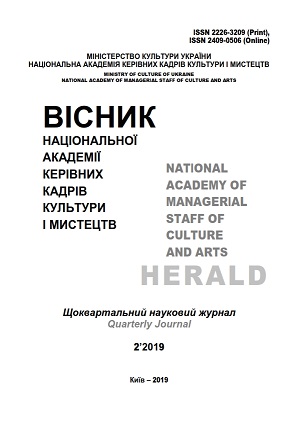Features of the Use of Children's and Women's Images in the Depiction of Victims in Soviet Propaganda Materials in the Second World War
Features of the Use of Children's and Women's Images in the Depiction of Victims in Soviet Propaganda Materials in the Second World War
Author(s): Svitlana Volodymyrivna Pavlovska, Valerii Mykolayovych HrytsiukSubject(s): Media studies, Military history, Political history, Politics and communication, Victimology, Fascism, Nazism and WW II
Published by: Національна академія керівних кадрів культури і мистецтв
Keywords: Second World War; Red Army; propaganda activity; ideological structures of the Red Army; posters; leaflets; victim; peculiarities of the victim's image;
Summary/Abstract: The aim of the study. Identify the peculiarities of designing artistic images of women and children in agitation and propaganda Soviet production during the Second World War and representing them ideological settings and values. The methodology of the study involves the use of a set of approaches and methods that achieve the goals of the study, in particular, the analytical method, comparative, with the help of which identify the common features in the formation of imagery proparadist and agitation posters using images of women and children; typology - to find out the gradation of the main ideological types of visual images and their representational value concepts; general-historical approach, which allowed to reveal general tendencies in the functioning of the Soviet ideological apprentices during the Second World War. The scientific novelty of the work consists in the fact that for the first time the research of ideological propaganda of the Durgoi of the World War with the current tendencies of the informational and ideological confrontation, which involves exercising influence on the human psyche using a certain information product, was actualized. Conclusions. As a result of the study, it was found that during the Second World War the Red Army was one of the most common methods of demoralizing the enemy and forcing him to stop armed resistance was a campaign postcard with a strong emotional subtext. Typically, the image of victims of war - members of the families of servicemen was used. The most frequent themes for postcards that were supposed to raise the spirit of Soviet soldiers were the images of raped and killed women with children who cry near them; images of female prisoners; children behind barbed wire who beg for help. These images were intended not only to inspire the continuation of the war to a victorious end, but to serve as motivators for each Red Army in the fight against the enemy.
Journal: Вісник Національної академії керівних кадрів культури і мистецтв
- Issue Year: 2019
- Issue No: 2
- Page Range: 203-209
- Page Count: 7
- Language: English

